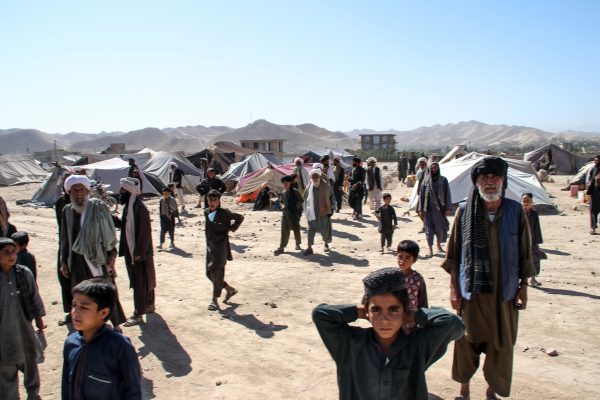As the Third Plenum of the Chinese Communist Party’s 20th Central Committee concluded, many China observers expressed disappointment. There were hopes for a bold reform agenda that could address the current structural economic challenges facing China. However, the Third Plenum Decision did not introduce any sweeping reforms. Instead, it reinforced Xi Jinping’s existing policy agenda.
A Shanghai-based foreign business representative remarked that many foreign companies had hoped for comprehensive economic reforms that would boost investor confidence. The outcome left them disappointed.
But the decision should not have surprised anyone, as the CCP had been signaling continuity well before the plenum. For instance, the Government Work Report in the spring discussed the relationship between “reform” and “stability,” concluding that stability must take precedence.
Additionally, the 13th issue of Qiushi, published just before the plenum, emphasized that China would double down on its current approaches, such as the CCP’s paramount leadership and state-led industrial policy. It also highlighted China’s primary challenge in deepening reform as implementing Xi Jinping’s vision, indicating that Xi’s vision is considered the correct path forward.
Despite the absence of fundamental changes, there are some positive developments that could have significant effects. For example, the Third Plenum Decision outlined steps toward advancing China’s fiscal reform.
One notable change is the strengthening of China’s direct tax system by expanding personal income tax and consumption tax. Currently, only 2 percent of the Chinese population pays income tax, and only 15 items are subject to consumption tax. Expanding the tax base will generate substantial revenue and increase the government’s reliance on direct taxes. The goal is to shift away from the current system, which relies heavily on indirect taxes – often criticized by experts as “medieval” – and move toward direct taxes to enhance the state’s revenue collection capabilities.
Another major reform focuses on the fiscal division between central and local governments. The aim is to address local debt issues by enhancing local government revenue through taxation. The decision instructs local governments to consolidate fees and taxes related to public works, education, and other programs into a unified local tax. It also grants local governments the authority to set local tax rates and expand the local tax base. The revised shared-tax system will allocate more tax revenue, such as from the reformed consumption tax, to local governments. Moreover, the central government plans to increase transfer payments to local governments and expand the local debt-to-bond swap through the issuance of long-term bonds.
Finally, the fiscal reform aims to alleviate the burdens on local governments. After Zhu Rongji’s 1994 tax reform, local governments received less than half of the national tax revenue but were responsible for 85 percent of general budgetary spending.
Zhu’s shared-tax system had two significant consequences. First, as local governments were tasked with providing local welfare services, such as operating hospitals and schools, the reduction in local revenue led to the collapse of rural welfare in the 1990s. Second, Zhu permitted local governments to raise funds through land transfers, which contributed to China’s massive real estate problem today.
The decision now calls for the transfer of some local responsibilities to the national government – a long overdue policy. Additionally, the central government will eliminate unfunded mandates, a major source of local financial strain.
However, while these changes are certainly positive in addressing China’s pressing needs, the real challenge lies in implementing these policies. First, although the Third Plenum called for transferring tax sources and increasing transfer payments to local governments, it does not specify which level of local government will benefit.
China has five levels of government: national, provincial, city, county, and township. Additionally, village committees, though classified as “self-governance organizations,” function similarly to government bodies. As a result, the term “local government” encompasses four different levels and village committees. Determining which level will receive new tax revenues and transfer payments is likely to spark intense competition among these various levels.
Under the current transfer payment system, provincial governments intercept most of the central transfer payments, leaving very little to trickle down to county and township governments, which bear the greatest burden of social welfare spending. How the central government will allocate new tax revenues and transfer payments to county and township governments remains a significant challenge. It is highly probable that provincial governments will intervene to maximize their own financial resources.
Expanding the local tax base and allowing local governments to set their own tax rates is a strategy to increase local income, which is particularly important for rural and inland areas. These regions, which receive less revenue from local businesses, may seek to extract more from the local population directly. However, this approach also risks provoking local instability, as evidenced by the experience of the 1990s. Thomas P. Bernstein and Xiaobo Lü’s 2003 study showed that the heavy tax burden, coupled with a lack of transparency and representation in how tax money was spent, were two leading causes of widespread rural protests and violence during that period.
Given that transparency and representation in local governments are unlikely to improve significantly in the near future, locals have limited options to voice their concerns over local tax policies or even know how their tax money is being used. A heavy local tax burden could potentially lead to unrest, similar to what occurred in the 1990s. As a result, local governments find themselves in a dilemma between increasing revenue and maintaining social stability.
Centralizing responsibilities will certainly alleviate local burdens. Additionally, establishing a national welfare system could lead to more equitable welfare across the country, as the current welfare inequality stems from the unequal fiscal power among different localities. However, as Andrew Mertha’s research on China’s “soft centralization” highlighted, shifting government agencies from local management to top-down management can create tension between local governments and the administrative agencies.
Since local governments do not view the administrative branches of the central government as part of their own structure, they are less likely to support these agencies. This “vertical vs horizontal” (tiao vs kuai) conflict can reduce the effectiveness of administrative agencies and intensify the “bargaining treadmill,” as local governments may refuse to cooperate and communicate effectively.
Eliminating unfunded mandates will alleviate the fiscal burden on local governments. However, it is likely to increase the burden on local officials. When local governments receive funding from higher-level authorities, they are under constant pressure to demonstrate results, as higher-level governments expect value for their money. This intense pressure to perform can lead to formalism and information fabrication.
For example, a cadre in Hunan shared that his locality received funding from the provincial government to showcase technological advancements in grid management. He was required to visit all households within his grid and enter their information into a new management app. “It’s impossible,” he said. “If I visit all households, I won’t have time for my other responsibilities.” Consequently, he fabricated the information, knowing that “the provincial government will never send people to verify.” As he put it, “They only care about completion; as long as I show them results, I’m fine.”
Increasing reliance on direct taxes will be a significant step toward modernizing China’s tax system. However, implementing these taxes is challenging given the current weak economy. Rising consumption and personal income taxes could further suppress domestic demand and undermine Beijing’s efforts to boost consumption.
Japan’s experience provides a cautionary example. In 1996, Japan was recovering from the burst of its bubble economy, with GDP growth approaching 4 percent, similar to the average growth rate of the 1980s. However, in April 1997, the Hashimoto government increased the sales tax from 3 percent to 5 percent. This hike led to a sharp decline in domestic consumption, plunging the Japanese economy into recession and allowing deflation to take hold. The tax increase also contributed to the collapse of the Japanese banking sector, exacerbated by the Asian Financial Crisis.
Fiscal reform is not the only area affected by implementation challenges. For example, the Third Plenum calls for banning “illegal” industrial policies from local governments. However, excessive local industrial policies continue to thrive, contributing to China’s overcapacity in the electric vehicle (EV) sector. The definition of “illegal” industrial policy remains unclear, and localities quickly learn from one another, expanding their industrial policy strategies.
These examples illustrate that while Xi Jinping may have some promising ideas to address current challenges, he still faces significant hurdles in policy implementation. As a result, his vision is unlikely to bring about substantial change. After all, good policies are meaningless if they cannot be properly executed.





















Discussion about this post